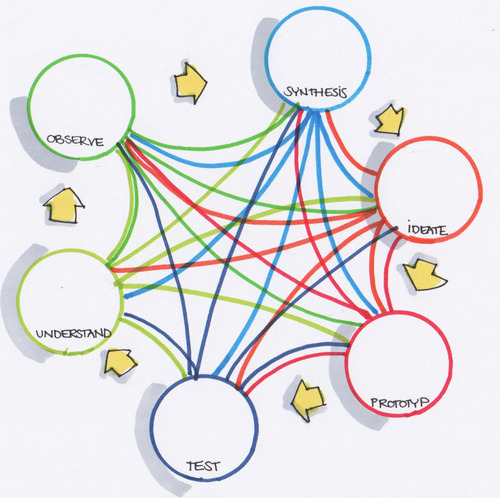Benefit N° three: let’s get visual!
"An image is worth a thousand words..."
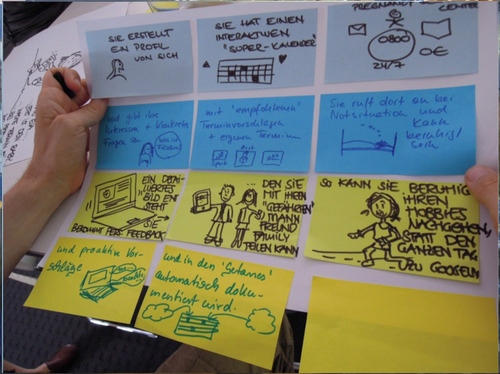
image: Gero Lurz
Visual thinking, the ability to hold a pen and possessing the creative confidence to use it are huge advantages in innovation processes. This especially counts for collaborative, multidisciplinary team processes. As Innovation occurs at the intersection of technology, business and human values, people with very different backgrounds start out to explore unarticulated customer needs together.
First of all, the team members need to find a common language, get on the same page, skip the specific terminology used in their field of expertise. At this point, a drawing is a great way to simplify complex matters and bring information to a point to be understood entirely. Throughout the innovation process, the team literally 'develops a picture of the future' together.
But most people are afraid to draw. While participating e.g. in a brainstorming session, they put huge amounts of text on their post-its. Their input could be much more effectively shared with a visual. It doesn't matter if the sketch is artistic or looks good, it matters that it communicates an idea, that it sparks an image in the other team members mind, that it opens up room for others to add their ideas. Sketching and rapid visualization lead the team outside the box to the creation of wacky and wild ideas. Our brains are particularly efficient in processing these images, in making fast, associative connections and triggering new thoughts. This way, a sketcher with wild ideas can be an amplifier and accelerator for the ideation process. A good storyboard wraps up the essence of an ideation session.
The beneficial use of visuals has become heavily adopted by the business world. As tiring powerpoint presentations eventually (hopefully) slowly die away, new formats like 'demo jams' or 'pecha-kucha' that get to the point fast employ visuals to create a picture it the mind of the audience. Another well known example is Alexander Osterwalders business model canvas, which makes complicated business subjects accessible by telling a story in a visual way. Same counts for Gijs van Wulferens 'Forth Innovation Expedition'.
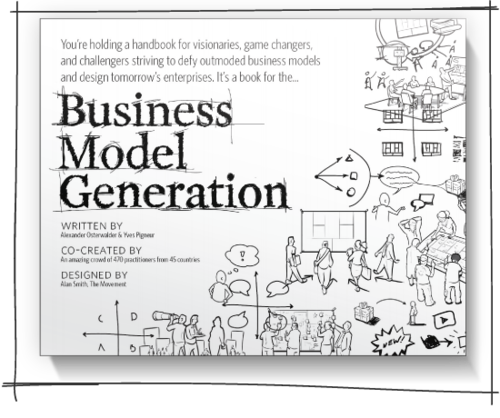
http://www.businessmodelgeneration.com
Graphic facilitation, an interactive moderation technique, uses large scale imagery to have the bigger scope of the problem in front of your eyes. It's a group process, where visuals are developed upfront and used during workshops, meetings and conferences to lead the group towards a goal. A shared picture supports a lasting memory in the group. This technique is especially powerful in participatory methods like world cafe or design thinking.
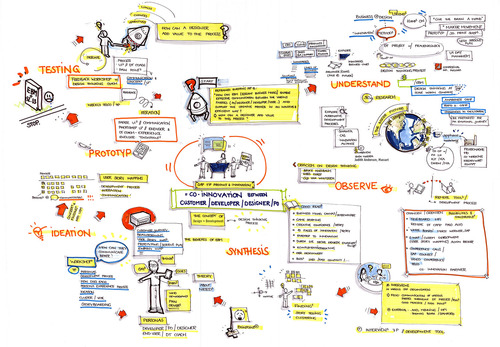
Mindmap/Visualization of process, Irina Pfenning
And how can you document a day full of brilliant ideas on a million post-its before they will fall of the whiteboard? Graphic recording is a great way to achieve it. Graphic recorders are usually artists / designers who watch and listen to the participants of a workshop or conference and transcribe the information in a visual manner. It is a visual live-documentation, that captures the talks and discussions, the solutions developed together and helps the team members to keep and understand ideas, questions and solutions and how they are linked.
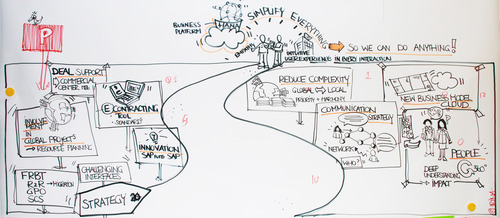
Graphic recording, Irina Pfenning
Of course, designers don't own the ability to draw. Recently you can find a lot of seminars on visualization, like the ones from Neuland, teaching business people and developers how to draw (which results in new 'visual codes' from figures to helicopters, that all look very much alike.) But designers do think differently than business people, which can be a great contribution to successful collaboration.
While other disciplines successfully employ design tools, designers need to pick up business thinking, to be qualified to act as 'strategic designers' and not to be the ones to make a presentation look sharp and colorful.
- Created on .
